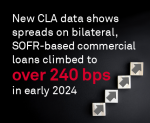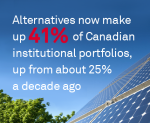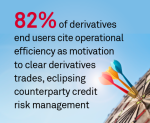Powerful market, economic and technological trends are pushing the Japanese bond market toward electronification.
Press Releases
Brokers are battling shrinking commissions, staffing shortages and other growing pains as they rush to keep pace with the rapid expansion of e-trading in U.S. equities.
New and conflicting data on commercial loans could add to uncertainty as financial markets await some clarity from the U.S. Federal Reserve about interest rates.
Despite favorable readings in June on consumer and producer prices, Fed Chairman Jerome Powell said that for now, policymakers are content to leave rates unchanged until they get a clearer signal on the economy.
Although technology is transforming the way companies issue corporate bonds, the mechanics of distributing newly issued bonds remain far less electronic and automated than many believe it should be.
Buy-Side Traders Want Better Sell-Side Coverage, but Disagree on What Great Coverage Looks Like
June 18, 2024
June 18, 2024 — More than half of buy-side traders globally struggle to get proper coverage from their brokers—a problem that reflects less on brokers’ commitment to deliver high-quality service, and more on traders’ rapidly evolving coverage needs at a time of technological advancements and changing market structures.
Bond Dealers Increasingly Automate Trading
June 12, 2024
The corporate bond market is undergoing a seismic shift, with nearly 30% of bond dealer trading volume now executed without human intervention, marking a significant milestone in the electronification of fixed-income trading.
With funding levels at historic highs, Canadian pension funds are pushing into private investments and alternative asset classes with the potential to diversify portfolios and boost future investment returns.
Risk Managers Ask for More Firepower
June 4, 2024
Less than half of global risk professionals are confident in their risk management processes during normal market conditions. Meanwhile, fewer than 40% believe their practices are adequate to handle the next unexpected market shock.
As buy-side firms use artificial intelligence and other digital tools to remake trading infrastructure, the drive to automate operations is causing many firms to take a second look at clearing more of their derivatives trades, which can create new workflow efficiencies.
Automation, AI and other advances are speeding the transformation of U.S. fixed-income markets by breaking down innovation barriers and forcing buy-side firms to invest in technology to keep up.
Pages
Media Contacts
Media Inquiry
Awards
- Investment consulting: A relationship business in a transactional world
- 2025 Coalition Greenwich Leaders: Middle Market Banking in the U.S.
- 2025 Coalition Greenwich Leaders: Small Business Banking in the U.S.
- 2025 Coalition Greenwich Leaders: Global Corporate Banking, Cash Management and FX
- 2025 Coalition Greenwich Leaders: U.S. Corporate Banking, Cash Management and FX










